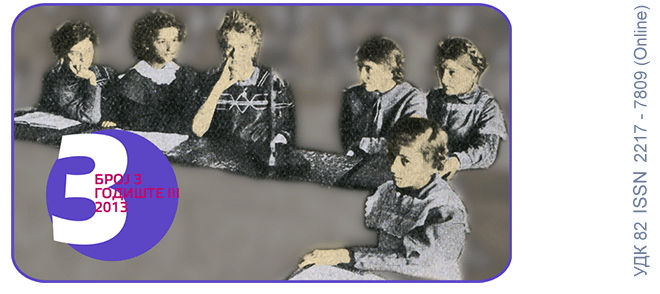Визуелне, тактилне и мултимодалне метафоре љубави у „Релационом раду"
Visual, Tactile and Multimodal Metaphors of Love in the "Relation Work"
Author(s): Snežana KalinićSubject(s): Theatre, Dance, Performing Arts
Published by: Филолошки факултет, Универзитет у Београду
Keywords: androgyny;Marina Abramovic and Ulay;métaphore vive;love;body;performance art
Summary/Abstract: The paper offers a „close reading“ of close relations performed by Marina Abramovic and Ulay in the Relation Work pieces. It interprets the performers' exploration of intersubjectivity during their twelve-year relationship which was both artistic and personal, and explores how they managed to translate the love discourse into visual,tactile, and multimodal metaphors that were related to androgyny, as well as to Eros and Narcissus myths. The essay is focused on the presented love relations which havetranscended the male/female antagonism and emphasized both partners’ consent to subjugate their own subjectivity to androgynous intersubjectivity and unity. It analyzes the performed endurance trials such as Relation in Time, in which the artists attempted to maintain the external androgynous unity which they achieved through their heads joined by their hair plaited together; Breathing In/Breathing Out, in which they kept on’kissing’, even though it compelled them to suffocate each other, because the exchanged air enabled them to form a connection on an internal and visceral level; and BalanceProof, in which they tried to use the sense of touch to overpower the narcissistic self regards.The paper relates the performed non-verbal metaphors to Paul Ricoeur's notion of métaphore vive, Charles Forceville’s concept of multimodal metaphor, Julia Kristeva's semiotics of histoires d'amour, and Mikhail Epstein's philosophy of the body. In addition,the essay analyzes various sign systems and perception modes, especially the sense of touch as the prime proximity sense and the most interactive mode of perception.
Journal: Књиженство
- Issue Year: 2013
- Issue No: 3
- Page Range: 249-272
- Page Count: 24
- Language: Serbian

